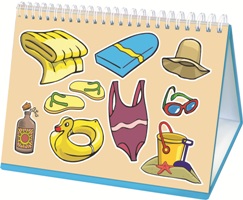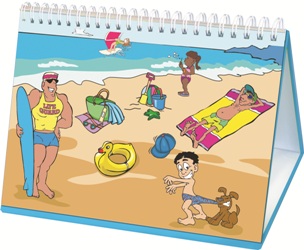 Recently I took a thirteen-year-old boy with autism grocery shopping for the first time. We had practiced all of the steps for paying: looking at the total on the register, taking out the necessary bills or coins, waiting for change, making sure we had correct change, returning the money to the wallet, etc. While I thought he was ready to do this in a natural environment, I did not expect what actually happened.
Recently I took a thirteen-year-old boy with autism grocery shopping for the first time. We had practiced all of the steps for paying: looking at the total on the register, taking out the necessary bills or coins, waiting for change, making sure we had correct change, returning the money to the wallet, etc. While I thought he was ready to do this in a natural environment, I did not expect what actually happened.
Standing at the counter with a line of people impatiently waiting behind us, my student dumped all the change from his wallet on the counter and slowly began counting out the exact amount. I could hear other store patrons grumbling behind us when my student finally finished paying, then dropped coins all over the floor, and swept his remaining money back into his wallet.
The concern here is that some of the behaviors associated with autism can place an individual in danger if misunderstood by a cashier or store patron. My student appeared to be oblivious to the frustration of the people around him, offering no apology or explanation. There are many resources out there for teaching children with autism about identifying coins, counting out exact change, etc. But it’s essential that we think beyond the fundamentals of managing money to the more complex skills of managing the social situations that arise during money transactions on a daily basis.
Here are some social skills related to money to practice with your students:
 Keep your wallet in your hand, do not lay it on the counter.
Keep your wallet in your hand, do not lay it on the counter.- Look for the total on the register. If there is not a place to see the total, ask for it after all the items have been rung up.
- Put the money in the cashier’s hand.
- Put your hand out to receive change.
- Once you have completed payment, make sure your wallet is securely back in your pocket or bag.
- Understand how to respond if a cashier asks “Do you have exact change?” or “Do you have a smaller bill?” or any variation of those questions.
- Pay with speed.
- Understand how to ask to put an item back if you do not have enough money.
- Know basic scripts for what to say in challenging situations, such as if you accidentally bump into someone with your shopping basket or you are taking a long time and another patron says something rude about it.
My takeaway from this experience was that I needed to provide practice in the natural environment much sooner than I had thought. I must consider the fact that we simply can’t contrive the broad range of possible interactions with strangers in a home or classroom setting. My students require dozens, if not hundreds, of opportunities to practice a skill before mastering it, and generalization is frequently challenging, so presenting them with a variety of natural environment experiences is important. I also must recognize that a student’s behavior will often vary from one environment to another, so the sooner I know what he or she is doing in the natural environment, the sooner I can implement meaningful instruction and intervention to address any problems. Finally, because ABA providers and teachers have more limited access to the natural environment than parents and caregivers, we should provide specific goals and teaching strategies to help them practice with the learner when we’re not present.










